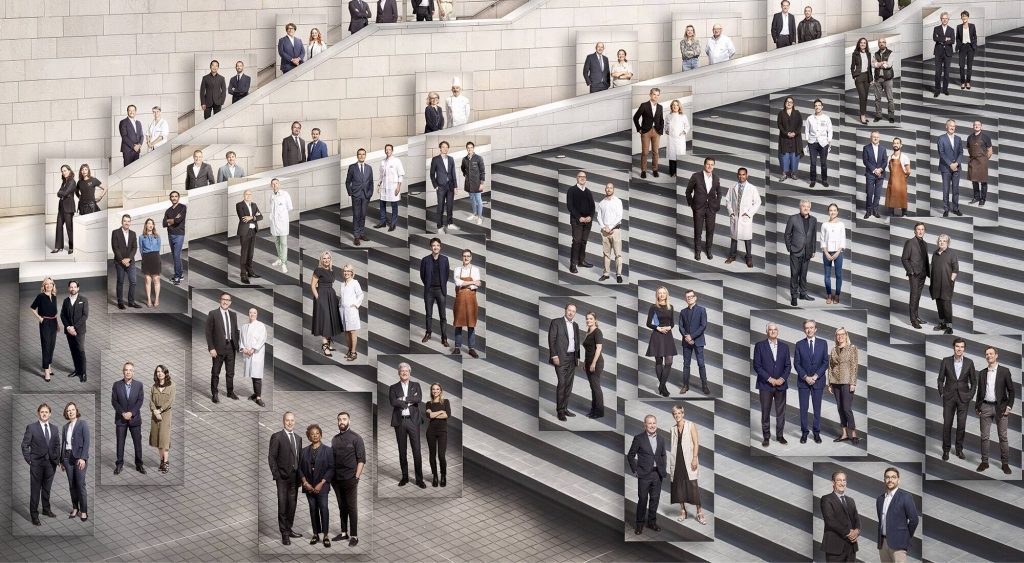The personal luxury goods market reached €288 billion ($303.9 billion) in value in 2021, and 2022 “started strong,” with sales in the United States and Europe leading growth. Up 7 percent from pre-pandemic 2019, luxury goods sales in 2021 saw a “v-shaped rebound,” according to Bain & Co., benefitting from an “exuberant” 2021 holiday shopping season across regions, continuing to see double-digit growth in China, and experiencing sustained local demand in Western markets like the U.S., which “maintained momentum, even after federal [pandemic] stimulus checks ended.”
Despite rising inflation, geopolitical turmoil, and the striking impact of COVID-19 lockdowns in China, the personal luxury goods market experienced “remarkable performance in the first quarter of 2022,” Bain found, growing by 17 to 19 percent at current exchange rates (13 to 15 percent at constant exchange rates), over the same period in 2021, with the Boston-based management consulting company pointing to a number of key factors that are helping to drive 2022 rises.
The U.S. market, for instance, is experiencing “unprecedented growth as luxury brands are unleashing the real power of diversity and inclusion, discovering the true potential of the entire American customer base.” Sales of luxury goods in Europe are also on the rise thanks to “booming local demand driven by a fierce ‘back to normal’ attitude and a rebound in intraregional tourism,” and “limited consequences [of the Russia-Ukraine war] on global luxury customer sentiment and spending.” (LVMH, for one, revealed this spring that sales in Europe were up 45 percent during Q1 on a year-over-year basis, with its fashion and leather goods brands (think: Louis Vuitton, Dior, Celine, and Loewe, among others), as well as jewelry brands like Tiffany & Co., enjoying strong growth in the EU, as well as the U.S. Meanwhile, Kering reported in April that sales at its biggest brand Gucci were driven largely by local customers in North America and Western Europe during the first quarter of the year.)
Spending in China has taken a hit as a result of strict COVID restrictions, but Bain states that “local consumer appetite remains strong and will potentially lead the country to recover between in late 2022 to early 2023.” And still yet, the luxury goods market in South Korea is undergoing a “profound transformation,” increasing in size and cultural relevance and replacing touristic spending with local demand.
With the foregoing in mind, Bain’s analysts state that the mid-term direction of the luxury market remains unchanged, and the firm estimates market growth to reach €360 to 380 billion by 2025. Optimistically, if the first half of 2022 growth path continues throughout the entire year, the market would reach around €320-330 billion by the end of 2022, growing 10-15 percent over 2021. On the other hand, in a slower pace scenario, which projects a potentially reduced growth pace due to a slower recovery of mainland China and challenged spending in mature markets caused by inflationary pressure and macroeconomic slowdown, the market will reach €305-320 billion by the end of 2022, growing 5-10 percent over 2021.
In a note of their own dated June 15, Bernstein’s analysts reflected on recovery scenarios across China consumer sectors and in terms of luxury goods, in particular, stated that “early signs indicate that demand is reviving in China, as lockdowns are lifted – with shopping malls in Shanghai reporting sales 80 percent of pre-lockdown levels.” They note that in exiting the existing lockdowns, “demand seems back to an even keel and growth trajectory – equally to what we had seen up to Chinese New Year – despite softer macro-economic conditions.”
(As for apparel and footwear sales in China, Bernstein analysts have observed that “underlying demand remains strong in China for our sector, and we expect to see a bounce-back as restrictions ease, led by e-commerce, as China distribution centers and last-mile delivery are back on track.”)
Looking forward, Bain’s Claudia D’Arpizio and Federica Levato highlight growth opportunities for luxury brands, which range from “responding to the call of sustainability” by “out-innovat[ing] on sustainability to build a competitive advantage” to making in-roads into the virtual world. In terms of the latter, they note that in addition to growth delivered by traditional luxury products, digital assets and the virtual world (i.e., the metaverse, social media and gaming) “will play an increasingly relevant role in luxury brands’ value propositions.” By the end of 2030, they expect “digital assets and the metaverse [to] comprise 5-10% of the luxury market. Luxury brands have the opportunity to play a key role in shaping the virtual worlds on the rise, acting as creators and builders.”











